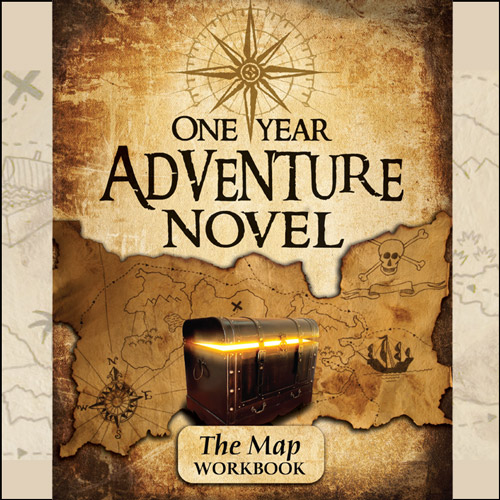What to Do with a Story Idea That Won’t Give Up on You?
 Shadow Writing, Part 1
Shadow Writing, Part 1
It’s no secret I’m working on a YA novel. What has been a secret (until now) is that I’ve tried to write this novel at least four times: once in grad school, again five years later, again a couple of years after that (time blurs at this point) and again last year.
I’ve written this novel four different ways, and each time the result was a vastly different novel.
Besides complete rewrites, I’ve tinkered, revising sections large and small as routinely as the harvest.
For 22 years the idea has been part of my life, like a piece of heirloom furniture I can neither use nor sell. I’ve lost track of the times I’ve moved it to make room for something else, each time dusting the top to prove I still cared.
On the twentieth anniversary of it’s magical appearance, I actually decided to give up on it. I moved the idea into the attic and tossed an old sheet over the top. The sheet was not to protect it, but to soften its edges, to hide it from myself. If I could not make it go away, I could at least pretend it wasn’t there.
I’m not sure what I was thinking when, in August of 2011, I clunked into the attic looking for material, and discovered that the sheet had slipped off. I did not want this idea, but there it was. And though it still hulked silently in the shadows, its surface now gleamed in places. A few details caught my eye, things I had never noticed. Not rich details, mind you. Not glimpses of white porcelain or polished silver, but unexpected gouges and dull brass fittings—details that shouldn’t have been there, like an equation cut into the trunk of an old tree. Edges in a circle.
Of course, this frightened me.
Back went the sheet in a swirl of dust. Back came the dark, malformed statue with soft, safe lines.
But I couldn’t stay away, and the next time I went into the attic, a mere week later, the sheet again lay in a pool of white on the floorboards, and the heirloom gleamed in the moonlight. I should have known better than to go looking for safe ideas under a full moon. Perhaps I wanted the sheet to come off, after all.
At this point in this story, the idea needs a description. Problem is, the only way to describe it is to write it. It’s a book idea. As such, it’s a wonder, a monstrosity, a ghost dripping not with ectoplasm but real sweat.
Let’s just say that from one direction—seeing it straight on—it looks like an old book with two covers, neither of which seems to fit. But catch a glimpse from the corner of your eye and for just a moment you might see the pages fanning out, bending themselves over a broken spine. And you might see in those pages things that can’t exist together, yet somehow do: swords and starships, cyborgs and castles, truth and lies. You might see men as misshapen as circus freaks or as glorious as angels. You might see a six-foot globe spinning upside down on an invisible axis.
This is the book I tried again to write last year. I still don’t know why. Maybe I knew the sheet would never stay on, and the only way to be done with it was to drag it back downstairs and give it air.
So I wrote it again, or tried to. I wrote 70,000 words of the book in 2012—everything but the last three chapters.
I had really thought that this time would be the time. I mean, I had finally conquered the book’s elusive theme; I finally knew what I was writing about. And I had found a world that was more than just a colored backdrop for my plot; this world was so entwined with the action that it became, for me, another character in the story. My world had layers of culture, a society built around the book’s premise, rich with a history that felt both deliciously alien and as familiar as a pair of old socks.
To me at least, my setting felt so real I could almost taste the hint of pine needles in the Freehold, feel the texture of sand as fine as flour and as red as an Arizona mesa in the Grun Desert, hear the bashing of the river against the wharf of the Old Quarter beneath the battered walls of Serapis.
And still the book didn’t work. Oh, pieces of it worked. Maybe I can say that all of it worked, but not together. It was like the gears of a pocket watch; they aren’t exactly broken when removed from the case, they’re just incomplete. I had not written the heirloom, only its facade. To really capture the idea, I would have to start over. Again.
Or I could put it back in the attic.
Starting over would mean a fifth version of the novel, a story written in my mid-forties after two decades of pondering its premise. Maybe it was time to move on. If I couldn’t do it after four tries, what made me think I could do it in five? Why waste another year of my life?
I took the easy way out; I decided not to decide, and left the idea sitting uncovered in the living room of my mind. Maybe it would serve as a morality tale: never ignore your muse. Or maybe it would act as a sort of embarrassed confession of my writing sins, Daniel Schwabauer’s Opus Minimus.
I printed it out double-sided, punched holes along the edge (take that!) and clipped it into a binder. Then I shoved it onto a shelf with versions one, two and three as if there were something final about the act.
I was kidding myself.
The idea was not, and could not, be equated to what I had written about it. It could not be confined to a green notebook.
Thus, when I came home from church on January 6, 2013, there it was, waiting for me, brooding in the slanted light of the foyer window. The sheet was nowhere in sight, probably devoured by it’s mysteriously present jaws. (Where did those teeth come from?! Ah, yes, of course … the theme! I might have known.)
And I couldn’t help myself, couldn’t resist stretching out my hands one more time towards the carved letters that glinted along its burnished equator, spinning above the surface like stiff clouds:
WELCOME HOME.
To be continued in When Your Perfect Story Falls Flat



MR.S. I didn’t know this. This give me so much hope.
I’m already on seven years with my heirloom, and I’ve been beginning to feel a bit foolish. And intimidated and frustrated. Because I want people to see this and I can’t get it right while my peers are seeking publishing and self-publishing and seem to be so far ahead of where I am.
Maybe I am foolish. But I think that’s okay. I’ll get it as right as I can, if not for anyone else, than at least for me.
Glad my suffering is helpful! 🙂 Seriously, I’m happy this is encouraging to you. I only wrote it because I thought it might be helpful to others if I could be completely transparent about my struggles with writing. I do believe every heirloom has a purpose, even if it is just to shape us as writers or human beings. But I also believe that this sort of story, the one that won’t go away for a writer, probably sticks around because it has vast potential. We can feel it before we can express it. I guess LOTR and Narnia fall into this category, though of course that’s no guarantee of a similar readership.
This gave me figurative goosebumps.
That’s a really weird sentence but it’s the best way I can describe it. 😛 Thank you. 🙂